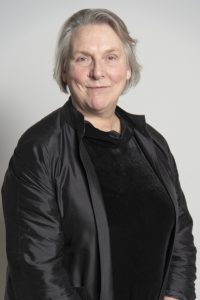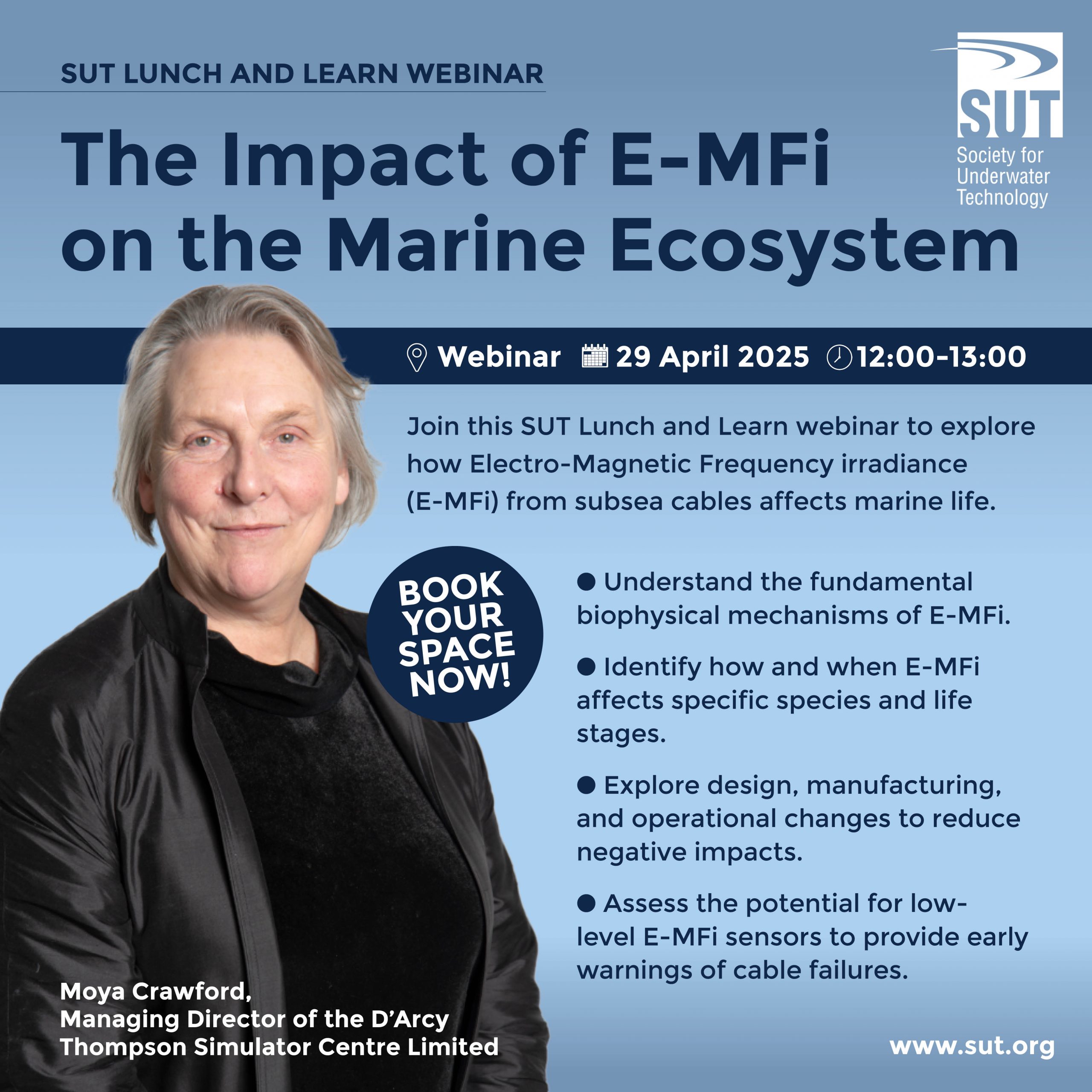SUT Lunch and Learn Webinar – the Impact of E-MFi on the Marine Ecosystem
29 April, 2025
Webinar | 29 April 2025 | 12:00-13:00
This SUT Lunch and Learn webinar highlights the collaborative multi-disciplinary effort being undertaken in Scotland, in particular, to better determine the potential effects of Electro-Magnetic Frequency irradiance (E-MFi) from subsea inter array and export cables on Marine Ecosystems; with the express aim of engaging with High Voltage (HV) research engineers, cable designers, manufacturers and installers, and Offshore Wind Energy companies. Much of the biological and ecosystems expertise is being delivered through the Marine Alliance of Science and Technology, which has recently formed an E-MFi Working Group.
The aim of this Lunch and Learn is to engage with the considerable research and industrial expertise in the North of England and build on relationships with the ORE Catapult.
Electricity generated by offshore wind is spearheading the transition away from burning fossil fuels. Scotland has been at the forefront of this process, to date. Governmental and regulatory bodies both in Scotland and The Netherlands have become increasingly alert to concerns raised about the potential, significant, long term, negative ecosystem impacts caused by Electro-Magnetic Frequency irradiance (E-MFi) from subsea cables. This is because many marine species are electro and/or magneto receptive, and use extremely low natural levels of both to navigate, hunt prey and communicate with each other.
The localized, E-MFi from electricity generation, grounding and transmission, however, introduces both highly localized and intensified levels of both; the ecosystem impact of which is not yet known. The aim of the MASTS E-MFi Working Party, therefore, is to promote the engagement required with the HV electrical engineering community and find the funds required to undertake the rapid, multi-disciplinary research required to assess:
- what is happening at a fundamental biophysical level;
- better understand how and when E-MFi might impact specific species, and at what period of their lifecycle;
- determine what design and/or manufacture and operational procedures might be changed to reduce impact, where it seems highly likely or can be shown that long term, significant, and negative; and, importantly,
- positively explore whether the sensors available to detect E-MFi at the low levels that marine species can detect them, might give early warning with respect to potential cable failure.
Presenter – Moya Crawford
 Moya Crawford is managing director of the D’Arcy Thompson Simulator Centre Limited, which is highly innovative, joint venture between her family company, Deep Tek and St Andrews Innovation. She has worked in the field of underwater technology for over 40 years combining cargo recovery at ever-increasing depth with the development of cost-efficient remote technology for deep and ultra-deep water.
Moya Crawford is managing director of the D’Arcy Thompson Simulator Centre Limited, which is highly innovative, joint venture between her family company, Deep Tek and St Andrews Innovation. She has worked in the field of underwater technology for over 40 years combining cargo recovery at ever-increasing depth with the development of cost-efficient remote technology for deep and ultra-deep water.
Hands-on experience includes the design and build on the Expro AX-S system for light well intervention and the sale and systems integration of the world’s, first, two synthetic filament rope cranes (110t in air/110t @ 3000m). Neither would have been possible without the rigour and holistic, principles-based approach demanded by marine salvage on ‘No Cure/No Pay’. Her interest in Electro-Magnetic Frequency irradiance is directly informed by insulation and performance issues with steel wire hoist umbilicals, in combination with the D’Arcy’s visualization of the transformation, storage and movement of energy, across the themes of water, energy and life.
Moya’s work in engineering and onsite operation has been coupled with a personal commitment to marine science, with board level representation for academic and research institutions in Scotland. She was the President of the Society for Underwater Technology (2021-2023) and chairs its International Salvage and Decommissioning Committee. She also sits on the Independent Advisory Board of the Marine Alliance for Science and Technology for Scotland and is a Director of MAST-S.
